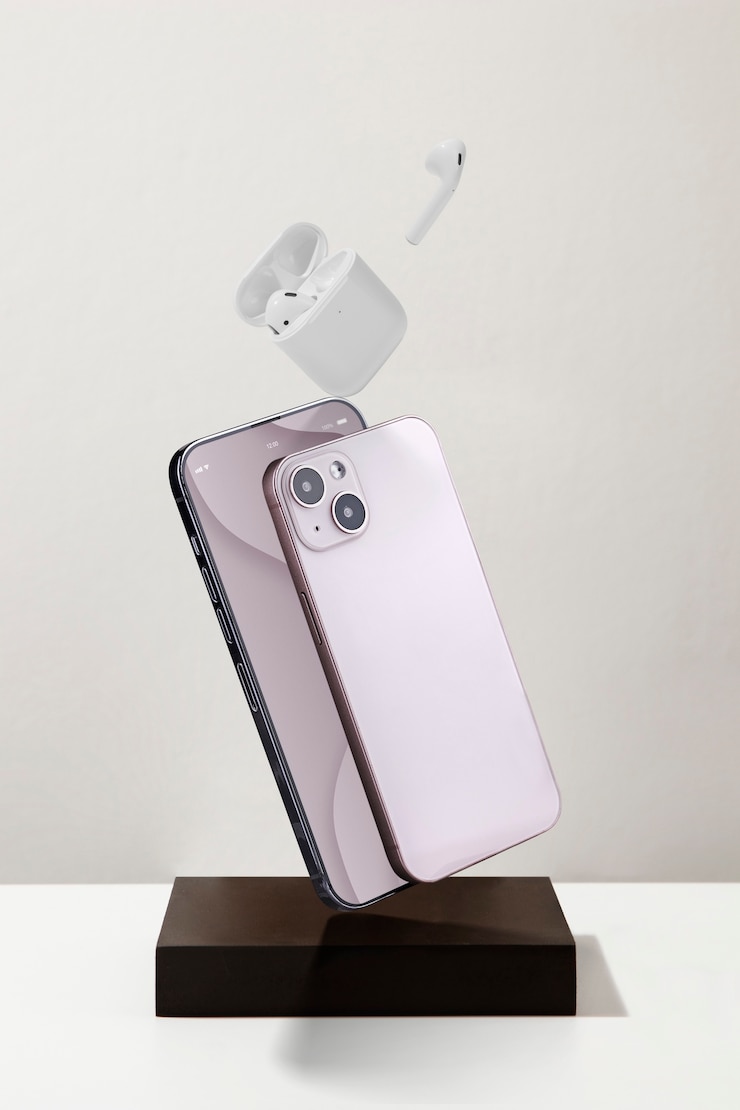TECH
Apple iPhone 17: Official 2025 Release Date Revealed

The Big Reveal: Apple Event & Launch Timeline
Apple traditionally unveils its flagships during a September keynote, usually held at Apple Park in Cupertino, California. Insiders expect the iPhone 17 announcement on September 10–12, 2025, followed by pre-orders a few days later and an international rollout by the end of the month. These product launch timelines have been consistent since the iPhone X era, cementing Apple’s reliability in release schedules.
During this reveal, Apple is expected to unveil the A18 Bionic chip, the next evolution in their silicon lineup. This processor is rumored to feature enhanced neural engine cores tailored for advanced AI and machine learning operations, enabling real-time camera scene analysis, more responsive Siri, and improved battery optimization.

Performance & Power: A18 Bionic Chipset
At the core of the iPhone 17’s appeal is its next-gen performance:
- A18 Bionic chip: Leveraging ARM-based microarchitecture, this SoC promises up to 30% faster CPU and 40% improved GPU performance over the A17. Whether you’re gaming using Metal API, editing video via Final Cut Pro, or seamlessly multitasking, the A18 is designed to deliver desktop-class speed in a mobile form factor.
- Enhanced neural engine: With an estimated 20 billion transistors, the neural engine will accelerate on-device AI tasks—such as real-time language translation in the Messages app and smarter photographic capabilities—even without cloud dependency.
Apple’s silicon roadmap aims for better thermal performance, longer battery life, and energy efficiency. Reports suggest improved heat dissipation through an ultra-thin vapor chamber and graphene-based cooling, delivering sustained performance without throttling during prolonged use.
Camera Innovations: Quad-Camera System & Sensor Upgrades
Photography has always been a key selling point for iPhones. For 2025, the iPhone 17 is expected to refine this further
- Quad-lens camera layout: Including a 108 MP wide sensor, 48 MP ultra-wide, 12 MP periscope telephoto (5x optical zoom), and dedicated LiDAR scanner for advanced depth mapping and AR applications.
- Sensor-shift stabilization: A continuation of the iPhone 16 Pro Max feature, but with refinements to improve low-light clarity and smoother video capture—enhanced by ProRes video codecs for up to 8K ProRes RAW recording.
- Computational photography: Powered by the A18’s neural engine, expect upgrades in Smart HDR 6, Deep Fusion, and real-time photographic styles, allowing true-to-life colors and portrait effects that rival professional DSLRs.
Additionally, audiovisual enthusiasts anticipate Apple’s first built-in hardware support for Spatial Audio recording, making high-fidelity 3D audio capture possible directly from the phone.
Display & Design: Brighter, Smoother, More Efficient
Every new iPhone refresh includes display enhancements; here’s what’s rumored for the iPhone 17:
- 6.4” and 6.8” OLED panels: Manufactured by Samsung Display or LG Display using LTPO technology that enables dynamic refresh rates from 1 Hz to 120 Hz. Benefits include smoother scrolling and Apple’s Adaptive Refresh Tech to conserve battery life.
- Brighter, color-accurate screens: Offering up to 2000 nits peak brightness, full P3 wide color gamut, and enhanced True Tone® auto-color calibration for real-world visibility even in sunlight.
- Always‑On Display: Following Apple Watch and Mac trends, expect customizable widgets like weather, calendar appointments, and system alerts accessible even when the phone is locked or in low-power standby mode.
- Next‑gen Ceramic Shield or Titanium: Speculation suggests Apple could introduce a new Titanium frame for the Pro models, boosted by surgical-grade stainless steel hinges for stronger device durability.
Operating System: iOS 19 Features
When the iPhone 17 launches, it will ship with iOS 19, bringing:
- Smart Widgets: Context-sensitive home and lockscreen widgets that adapt based on location, time, and usage patterns.
- On‑device Siri: Meaningfully faster and more private voice assistant commands handled entirely locally.
- Revamped Messages app: With live transcription, enhanced collaboration tools, and real-time translation—with neural engines translating speech and text seamlessly between languages.
- Health and Fitness integration: Expanded support for biomedical sensors enabling deeper wellness tracking like blood glucose estimation, hydration levels, and refined sleep cycle analysis via Apple Watch integration.
Connectivity & Battery: Cutting-Edge Advances
The iPhone 17 expects to set new wireless benchmarks:
- 5G mmWave + Sub‑6GHz: Supporting broader band coverage across U.S., European, and Asian carriers with global global mmWave compatibility.
- Wi‑Fi 7 support: Delivering up to 46 Gbps, ultra-low latency, and support for Wi‑Fi optimizations like OFDMA and MU‑MIMO.
- Next‑gen Bluetooth 5.3: Improved audio quality for AirPods Pro updates, lower latency for gaming, and better IoT connectivity.
- Battery innovations: A rumored 4400–4600 mAh battery with faster USB‑C 45W fast charging—enabling 50% charge in about 20 minutes. Also, slightly improved MagSafe charging speeds and enhanced accessory support.
Unique Features: What Sets iPhone 17 Apart
Here’s a look at some standout features that may set the iPhone 17 apart:
- Under‑display Face ID: Reduced notch or notch-less design with integrated Face ID sensors beneath the screen.
- AR/VR readiness: Early features built in to support Apple’s rumored headset, such as eye tracking and hand-tracking APIs.
- Eco‑friendly design: Greater use of recycled aluminum, rare earth-free magnets, and a reduced environmental impact throughout production.
- Security enhancements: Introduction of secure enclave revamp, encrypted drive volume (EDV), and expanded privacy routines for app permissions and photo/iCloud data handling.
FAQs
Q1: When will iPhone 17 be available for pre-order?
Apple typically opens pre-orders about a week after the announcement event, placing the order window around mid to late September 2025, with official ship dates about a week afterwards.
Q2: What price range is expected for the iPhone 17 series?
Analysts anticipate base pricing similar to the iPhone 16, starting at $799 USD, while Pro and Pro Max variants may reach $1,099 to $1,199, depending on storage tiers.
Q3: Will the iPhone 17 support Apple Pencil?
Rumors claim Apple may enhance stylus support for Pro models—potentially introducing a faster Apple Pencil or Pencil Pencil 3—although official confirmation is pending.
Q4: Can my current accessories work with the iPhone 17?
MagSafe-compatible chargers and accessories should still work. However, cases and screen protectors may require new sizing, especially if Apple tweaks the display or chassis dimensions.
Q5: Is there any backward compatibility issue with 5G carriers?
No: with integrated Sub‑6GHz and mmWave 5G chips, the iPhone 17 should offer full compatibility across all major carriers worldwide.

Conclusion
The Apple iPhone 17 marks a transformative milestone for Apple’s flagship series in 2025. With anticipated improvements in A18 Bionic performance, advanced camera systems, UNDR-display Face ID, and cutting-edge connectivity (including Wi‑Fi 7 and enhanced 5G), the iPhone 17 is poised to set a new benchmark in smartphone technology.
TECH
Top AI Tools You’ll Find on aliensync.com

At its core, aliensync.com positions itself as a technology trend forecasting hub, combined with elements of an AI creative workspace and a software innovation blog. It doesn’t aim to be everything, but it aims to be the bridge between the rapidly shifting worlds of AI, Web3, blockchain, decentralized finance, and modern digital communities.
Think of it this way: as AI tools become easier to use and more integrated into daily workflows, creators need spaces where they can discover new trends, collaborate, and understand the risks and opportunities of emerging tech. Meanwhile, developers and tech analysts want deeper commentary — not surface-level summaries.
aliensync.com attempts to sit in the middle, offering content and tools for:
- AI enthusiasts
- Web3 developers
- Blockchain researchers
- Content creators using AI tools
- Crypto analysts
- Software engineers
- Early adopters wanting future-focused insights
- Teams exploring digital collaboration platforms
- Innovators tracking decentralized apps
By connecting these groups, the platform fills a gap that traditional media websites often miss.
The Rise of the AI Creative Workspace
One of the strongest themes highlighted on aliensync.com is the shift toward AI creative workspace ecosystems. Instead of separating content creation tools from collaboration platforms, AI tools are merging into unified spaces where creators can draft, edit, plan, and publish faster.
Why this matters in 2025
AI tools are no longer seen as “helpers.” They’re core components of everyday workflows. From writers to developers to designers, the idea of using AI has become “default.”
But here’s the interesting part — most AI tools today still exist in silos. You have:
- One platform for AI writing
- Another for design
- Another for video
- Another for code generation
- Another for research
The big shift in 2025 is AI unification, where platforms combine multiple forms of creation into a single workspace. aliensync.com taps into this narrative by analyzing tools, frameworks, UX patterns, and creator behaviors emerging from this trend.
One user described the shift perfectly in a tweet earlier this year:
“AI tools used to be shortcuts. Now they’re a full workspace, a co-creator, and sometimes even the project manager.”
The line between human and automated creativity is fading — and aliensync.com leans into these discussions deeply.
Digital Collaboration Platforms: A New Standard for Innovation
It’s impossible to talk about modern tech without addressing the rise of digital collaboration platforms. Whether it’s remote work, decentralized creative teams, or cross-border developer groups, online collaboration has never been more important.
While platforms like Notion, Figma, Miro, or Slack dominate the mainstream, newer platforms are emerging that go beyond productivity — focusing instead on AI-powered collaboration.
What aliensync.com highlights
The platform touches on themes such as:
- AI-assisted team workflows
- Real-time creative input from hybrid AI–human teams
- Multi-user AI content generation
- Decentralized collaboration that uses blockchain for transparency
The idea isn’t just to work together, but to think together, with AI functioning as a participant rather than just a tool.
And in 2025, that concept is more relevant than ever.
Blockchain and Crypto Insights: A Balanced, Research-Driven View
While many websites treat blockchain as either hype or doom, aliensync.com approaches blockchain and crypto insights with a balanced, research-first tone.
Instead of repeating generic crypto news, the platform approaches topics such as:
- technology fundamentals
- blockchain trend analysis
- decentralized finance commentary
- risk mitigation strategies
- future of decentralized apps
- Web3 tech news with real-world context
This is crucial because the blockchain world has matured significantly since the early hype cycle. Institutional adoption, compliance frameworks, security improvements, and practical decentralized applications (dApps) are shaping the next phase.
Why this benefits readers
Most mainstream crypto blogs still lack clarity or domain expertise. By taking a research-based approach, aliensync.com resonates with:
- data-focused analysts
- Web3 developers
- researchers studying decentralized networks
- investors seeking technology-first perspectives
This aligns with modern EEAT expectations. Readers want expertise, and platforms like aliensync.com build trust by grounding insights in logic, not hype.
Web3 Tech News and the Decentralized Internet
Another recurring theme is Web3 tech news, especially the structural changes happening across decentralized networks.
Whether it’s:
- new consensus mechanisms
- evolutions in interoperability
- identity ownership
- cross-chain tools
- tokenized communities
- modular blockchain architectures
aliensync.com delivers commentary that helps readers understand why these developments matter, not just what happened.
2025 is shaping up to be a turning point for Web3. With widespread decentralization in identity systems, data storage, and creator economies, the conversation has shifted from “What is Web3?” to “How soon will it be mainstream?”
Platforms that can translate complex technical movements into actionable insights will thrive — and this is where aliensync.com steps in.
AI-Powered Content Creation: The New Creative Normal
Creators today face a common challenge: How do you maintain originality when everyone is using the same tools?
That’s where AI-powered content creation trends become essential. aliensync.com explores:
- new creative AI tools
- multi-modal generation
- AI-driven storytelling frameworks
- smart editing companions
- brand-specific AI models
- collaborative AI content hubs
The interesting part isn’t the technology — it’s the workflow. AI is no longer just generating content. It’s shaping creative decisions, providing direction, and helping creators break through mental blocks.
The biggest advantage
AI gives creators superpowers.
The biggest risk?
Everyone starts sounding the same.
That’s why creators need platforms, guides, and analysis that teach them how to use AI tools without losing their voice. aliensync.com frequently explores these nuances, providing practical and authentic perspectives.
The Future of Decentralized Apps (dApps)
As the Web3 ecosystem matures, decentralized applications are becoming more versatile, more scalable, and more deeply integrated into everyday products.
The platform breaks down:
- emerging dApp features
- decentralized identity systems
- tokenized access layers
- privacy-first applications
- decentralized finance tools
- security risks and best practices
In 2025, the shift toward dApps isn’t theoretical anymore. Large brands, gaming studios, creator platforms, and even small businesses are exploring decentralized systems for:
- authentication
- user rewards
- secure data storage
- peer-to-peer value exchange
aliensync.com analyzes these transitions with nuance, helping readers stay ahead of the curve.
Emerging Social Platforms Analysis
A unique niche covered by aliensync.com is emerging social platform analysis. With so many new creator-focused apps launching every quarter, it’s hard to keep track.
The platform often breaks down:
- creator economy evolution
- algorithm design trends
- engagement models
- decentralized social networks
- AI-driven content recommendations
- privacy-first communities
- digital identity layers
In an online world dominated by noise, algorithm distrust, and data-ownership debates, the rise of decentralized social platforms is accelerating.
The platform brings clarity by comparing approaches, reviewing user behavior, and highlighting long-term implications.
Technology Trend Forecasting: Looking Ahead to 2026 and Beyond
What sets aliensync.com apart is its commitment to technology trend forecasting.
Rather than focusing only on “what’s hot now,” it pushes into the next 12–24 months, exploring:
- AI autonomy advancements
- blockchain-as-infrastructure evolution
- socially aware algorithms
- hybrid human-AI creative ecosystems
- immersive digital collaboration
- natural language interface revolutions
- cross-platform digital identity systems
These forecasts aren’t just speculation. They’re grounded in:
- user behavior trends
- technological adoption curves
- cross-industry innovation signals
- developer ecosystem growth
- enterprise integration strategies
This long-term view helps readers make smarter decisions today.
FAQ’s
What is aliensync.com and what does it focus on?
aliensync.com is a forward-thinking platform covering AI creative workspaces, blockchain insights, digital collaboration tools, Web3 updates, decentralized app innovations, and software innovation trends. It serves creators, developers, and tech enthusiasts seeking future-focused analysis.
Is aliensync.com useful for learning about AI-powered content creation?
Yes. The site discusses creative AI tools, workflow optimizations, AI-assisted collaboration, and how creators can use intelligent tools to improve storytelling, editing, design, and production without sacrificing authenticity.
Does aliensync.com provide blockchain and crypto insights for beginners?
The platform provides balanced, research-driven blockchain and crypto analysis. While it’s valuable for beginners, it’s especially helpful for readers wanting deeper Web3 tech news, decentralized finance commentary, and long-term blockchain trend analysis.
How does aliensync.com help developers and researchers?
Developers benefit from its coverage of future decentralized apps, digital identity systems, software innovation discussions, and technology trend forecasting. It helps tech professionals stay ahead of shifts in architecture, AI frameworks, and Web3 infrastructure.
Final Thoughts
The digital world is evolving rapidly. AI is becoming more collaborative, Web3 is becoming more practical, and creators are adopting new tools faster than ever. In this environment, platforms like aliensync.com provide clarity, insight, and strategic awareness.
TECH
passwordreset.katyisd.org: Secure Access Made Easy

Simply put, passwordreset.katyisd.org is the official Katy Independent School District’s online password management portal. It’s a self-service tool that allows students, parents, and staff to:
- Reset forgotten passwords securely.
- Recover locked accounts.
- Update login credentials without contacting IT support.
- Access other district services through one unified login system.
The tool integrates directly with the Katy ISD password reset tool and is part of the district’s initiative to improve cybersecurity, reduce downtime, and empower users to manage their credentials independently.
Why Password Management Matters in Education
Every year, cybersecurity threats against school systems increase. Phishing emails, weak passwords, and accidental account lockouts can disrupt not just learning—but also administrative workflows. By using the Katy ISD self service password reset feature, the district ensures everyone stays connected without compromising safety.
Strong password management also:
- Protects student data and personal information.
- Prevents unauthorized access to district systems.
- Reduces the IT department’s workload.
As one high school student put it on social media, “I forgot my MyKaty login at least twice this semester, but the password reset site literally saved me before exams.”
How to Use [passwordreset.katyisd.org] Step-by-Step
Step 1: Access the Portal
Open your preferred browser and go to passwordreset.katyisd.org. Always ensure the URL includes “.org” and uses a secure HTTPS connection.
Step 2: Identify Yourself
Enter your Katy ISD username (usually your student or staff email). If you’re unsure, you can contact your school’s administrative office for help retrieving your username.
Step 3: Verify Your Identity
You’ll be asked to confirm your identity using pre-set recovery options, which could include:
- Security questions
- An alternate email
- A phone number for SMS verification
Step 4: Create a New Password
Follow the password guidelines:
- Use at least 8–12 characters.
- Include uppercase, lowercase, numbers, and symbols.
- Avoid personal details (like your name or birthday).
Step 5: Confirm and Log In
After creating your new password, log back in to MyKaty or other district platforms. You’re good to go!
Common Problems with [passwordreset.katyisd.org]
Even a reliable system can run into occasional issues. Here are some frequent errors and how to fix them:
“User not found” error
This usually occurs when you mistype your username or try using an outdated email format. Double-check the spelling and try again.
“Verification failed” message
Make sure your recovery email or phone number is up-to-date in your district records. If not, you’ll need to contact the Katy ISD account recovery team.
Expired password reset link
Links are typically valid for a limited time (around 15 minutes). Request a new link if yours has expired.
The Benefits of the Katy ISD Self Service Password Reset
The Katy ISD self service password reset feature saves time and stress for everyone in the district. Here’s how:
| Feature | Benefit | Ideal For |
|---|---|---|
| Instant reset | No need to wait for IT help | Students & staff |
| 24/7 access | Reset anytime, anywhere | Parents |
| Secure verification | Reduces hacking risk | Entire district |
| Multi-platform support | Works across MyKaty, Canvas, and email | All users |
It’s user-friendly, reliable, and integrated into the district’s larger cybersecurity framework.
Katy ISD Student Password Reset: Quick Access
Students often face the most login issues, especially during exam weeks or digital testing. The Katy ISD student password reset section ensures they can get back into their accounts without teacher intervention.
Pro Tip: Set up your password recovery options as soon as you receive your student login credentials. That way, you won’t be locked out unexpectedly.
Katy ISD Parent Password Reset: Keeping Families Connected
Parents need access too—for checking grades, communicating with teachers, and monitoring attendance. The Katy ISD parent password reset function on passwordreset.katyisd.org provides quick recovery for parent portal accounts.
To ensure success, parents should:
- Register an alternate email address.
- Set up a memorable security question.
- Save their login credentials in a secure password manager.
Katy ISD Staff Password Change: Security at Work
District employees are responsible for protecting sensitive student data. The Katy ISD staff password change tool helps maintain account security across internal systems.
Staff are encouraged to update their passwords regularly and never share them, even with trusted coworkers. By doing this, they uphold Katy ISD’s strong data protection policies.
Advanced Security Features in 2025
The 2025 version of passwordreset.katyisd.org login now includes new cybersecurity upgrades:
- Multi-factor authentication (MFA): Adds an extra verification step for better security.
- Device recognition: Automatically detects familiar devices for faster resets.
- Password history check: Prevents reusing recent passwords.
- Enhanced encryption: Keeps all reset activities confidential.
These enhancements reflect Katy ISD’s commitment to student and staff privacy.
Katy ISD MyKaty Password Help: A Central Hub
If you’re stuck, the Katy ISD MyKaty password help section provides links to district guides, tutorials, and tech support contacts. You can even find short video walkthroughs explaining how to recover or reset your login credentials.
Remember: If your issue isn’t solved within 15 minutes, it’s always best to contact the school’s IT help desk for personalized support.
Best Practices for a Secure Account
- Change passwords every semester.
- Use unique passwords for school and personal accounts.
- Enable MFA (if available).
- Avoid sharing devices without logging out.
- Stay alert for phishing emails.
Good cybersecurity habits prevent unwanted access and ensure smooth digital learning for everyone.
Troubleshooting Katy ISD Forgot Username Password
For users who can’t remember their login credentials, the Katy ISD forgot username password option is available on the same portal.
To recover your username:
- Visit the main login page.
- Click “Forgot Username.”
- Enter your registered email.
- Follow the instructions in your inbox.
This is especially useful for parents managing multiple student accounts.
Real-Life Example: The Power of Quick Access
A Katy ISD teacher once shared, “My entire class was about to start a digital quiz, and half the students couldn’t log in. Thanks to the password reset tool, everyone was back online in five minutes.”
This story highlights why self-service systems like passwordreset.katyisd.org are not just convenient—they’re essential for modern education.
The Pros and Cons of Using passwordreset.katyisd.org
| Pros | Cons |
|---|---|
| Easy to use and accessible 24/7 | Requires setup beforehand |
| Reduces IT workload | Dependent on internet connection |
| Supports all user roles | Some users forget to update recovery info |
| Integrates with all district apps | Reset links expire quickly |
While no system is perfect, the advantages of Katy ISD’s password management platform far outweigh the occasional inconvenience.
Security Risks and How to Avoid Them
Although passwordreset.katyisd.org is secure, users should still be mindful of online threats:
- Phishing: Always verify official emails before clicking links.
- Weak passwords: Avoid simple words or phrases.
- Unsecured Wi-Fi: Don’t reset passwords on public networks.
By practicing good digital hygiene, students and staff can protect both their accounts and the district’s entire digital ecosystem.
FAQs
How do I use passwordreset.katyisd.org for a student account?
Go to the site, enter your username, verify your identity, and create a new password following the provided guidelines.
Can parents reset their own passwords?
Yes. The Katy ISD parent password reset option allows parents to recover or change their credentials anytime.
What if I don’t receive the reset email?
Check your spam folder or verify that your alternate email is correct in the district’s records.
How often should I change my Katy ISD password?
It’s recommended to change it every 90 days or once per semester to maintain security.
Final Thoughts
In a world where digital education is the new norm, maintaining secure and reliable access to your school accounts is critical. passwordreset.katyisd.org is more than just a recovery tool—it’s the foundation of seamless communication between students, parents, and staff.
TECH
How Daxillzojid54 Redefines Online Branding

Daxillzojid54 isn’t just a random name—it represents the new language of the internet: short, cryptic, and algorithmically aesthetic. These names are part of a growing trend where brands and individuals prefer invented names and alias design that look futuristic yet remain memorable.
Think of daxillzojid54 as a brand identity code—a blend of personalization and abstraction. Such identifiers often serve as codenames for tech projects, AI models, or blockchain-based digital assets. They reflect creativity, uniqueness, and a break from traditional branding conventions.
In digital communities, these identifiers also serve another purpose: creating a sense of mystery handle. When someone sees a name like daxillzojid54, they’re instantly intrigued—what does it represent? A person? A project? A token? That curiosity itself drives engagement.
The Rise of Abstract and Invented Names
A Shift from Familiar to Futuristic
Brand names used to rely on recognizable words—think Apple, Nike, or Amazon. But in 2025, futuristic naming takes a different path. Abstract names like daxillzojid54 appeal to younger, tech-savvy audiences who value individuality over familiarity.
They often use online alias generators or AI-driven tools to craft such handles—combinations of syllables, characters, or numerical codes that sound unique and look algorithmically modern.
The Psychology Behind Abstract Branding
Abstract identifiers like daxillzojid54 work because they’re open to interpretation. People subconsciously attach meaning to them, and that flexibility makes them powerful branding tools. They’re easier to trademark, more adaptable to various languages, and visually striking in digital spaces.
A marketing strategist recently tweeted:
“A good digital alias doesn’t need meaning—it needs mystery. Daxillzojid54 does both effortlessly.”
That blend of curiosity and digital precision defines modern identity architecture.
Digital Identity and the Age of Personal Branding
Defining Your Digital Identity
In 2025, digital identity isn’t limited to usernames or avatars—it’s an ecosystem of identifiers, behaviors, and signals. Whether you’re a creator, gamer, entrepreneur, or AI enthusiast, your alias becomes your digital fingerprint.
Using something like daxillzojid54 creates a sense of pseudonym branding—a controlled identity that separates your real-world persona from your digital presence. This approach enhances privacy and creative freedom.
The Role of Identity Tokens and Crypto Names
With the rise of crypto name generation and decentralized IDs, unique identifiers like daxillzojid54 can even represent ownership on the blockchain. These can be linked to identity tokens, NFTs, or other verifiable digital credentials.
Imagine a world where daxillzojid54 isn’t just a username—it’s a verified cryptographic identity, used across ecosystems like Web3, gaming, and digital commerce.
Creative Handle and Brand Architecture
Why Unique Usernames Dominate in 2025
Platforms like Instagram, TikTok, and Discord are oversaturated with common names. A unique username like daxillzojid54 cuts through the noise. It’s recognizable, algorithmically distinct, and signals tech fluency.
Marketers and content creators often rely on name architecture strategies—carefully designing aliases that can scale from personal identity to full-fledged brand.
For example:
- Daxillzojid54 Studio → a creative tech agency
- Project Daxillzojid54 → a product beta codename
- Token DAX54 → a blockchain identity asset
Each variation builds brand value while retaining the abstract charm of the original identifier.
How to Design Your Own Alias
Creating an alias like daxillzojid54 isn’t about randomness—it’s about structured creativity. Here’s how you can design your own abstract identifier with intent:
- Blend letters and numbers strategically. Use patterns that feel balanced and readable.
- Use repetition or rhythm. Alternating consonants and vowels enhances memorability.
- Include hidden meaning or personal reference. Even if others can’t see it, it makes the name emotionally resonant.
- Test pronunciation and visuals. The best handles sound futuristic but roll off the tongue easily.
- Run a uniqueness check. Ensure your alias isn’t already in use across platforms or domains.
These principles combine linguistics, semiotics, and digital branding—a process now widely adopted by creative professionals and AI developers alike.
The Role of Abstract Branding in Tech Projects
From Project Codenames to Product Names
Tech companies often use placeholders like “Project Titan” or “Neuralink.” However, in 2025, the aesthetic of abstract identifiers such as daxillzojid54 has become mainstream.
They allow secrecy during early development, align with modern design language, and appeal to a digital audience fluent in code. A well-chosen project codename creates buzz long before launch—just as “daxillzojid54” might spark online speculation about what it represents.
The Appeal of Cryptic Names
Cryptic name meaning has become a branding trend. It gives companies creative freedom and users something to decode. Whether it’s an AI startup or a blockchain project, such names convey innovation and depth.
Pros and Cons of Using Invented Names
| Advantages | Disadvantages |
|---|---|
| Unique and trademark-friendly | Harder to recall for some audiences |
| Works globally across languages | Can seem impersonal |
| Evokes mystery and modernity | Requires more storytelling context |
| Great for SEO with zero competition | Risk of over-abstraction |
The key is balance—ensure your abstract branding feels intentional, not random.
Real-Life Example: Turning a Handle into a Brand
A digital artist once started with a random alias like daxillzojid54 on an art platform. Within months, the name became synonymous with glitch art and AI-generated aesthetics. Instead of changing it, they leaned into its uniqueness, building a recognizable brand identity that expanded to merchandise and NFTs.
Their story shows how a mysterious alias can evolve into a profitable, memorable brand.
The Future of Identity Branding
The Merge of AI and Creativity
AI tools now help generate, test, and even trademark unique names. Soon, we’ll see fully automated identity branding—where your digital alias, logo, and color palette are co-designed by algorithms trained on audience psychology and design language.
The Rise of Multi-Layered Identities
People won’t have just one alias anymore. You might have:
- A professional identity for business
- A creative handle for art
- A crypto identity for blockchain networks
Each layer reinforces your overall digital ecosystem. Names like daxillzojid54 are perfect foundations for such modular identity frameworks.
Expert Tips for Using Abstract Identifiers
- Anchor it with meaning later. Even if your name starts abstract, build narrative around it.
- Use consistent visual branding. Fonts, colors, and imagery should complement your alias.
- Leverage storytelling. Explain your alias’s origin—it humanizes abstraction.
- Engage your audience. Ask them what they think the name means; user interpretations create community.
- Stay authentic. A futuristic alias should still align with your real purpose or values.
FAQ’s
Q1: What does daxillzojid54 mean?
It’s an example of an abstract identifier, combining letters and numbers to create a unique, modern digital alias. Its meaning can evolve depending on context—brand, project, or personal use.
Q2: How can I use a name like daxillzojid54 for branding?
You can use it as a unique username, project codename, or even as a brand identity code. It works across websites, games, NFTs, and creative portfolios.
Q3: Why are cryptic names becoming popular?
Because they blend anonymity with creativity. In a world overloaded with common terms, cryptic name meaning draws curiosity and engagement.
Q4: Can I generate similar names automatically?
Yes, AI-powered name generators and online alias generators can produce creative handles inspired by patterns like daxillzojid54. These tools analyze phonetics, uniqueness, and digital style trends.
Final Thoughts
Names like daxillzojid54 are more than digital quirks—they’re reflections of our evolving relationship with identity, technology, and creativity. As personal branding merges with AI and cryptography, identifiers like this will become cultural symbols—half art, half algorithm.
-

 BLOG6 months ago
BLOG6 months agoUnderstanding the ∴ Symbol in Math
-

 EDUCATION6 months ago
EDUCATION6 months agoHorizontal Translation: How to Shift Graphs
-

 EDUCATION6 months ago
EDUCATION6 months agoUsing the Quadratic Formula
-

 EDUCATION6 months ago
EDUCATION6 months agoThe Meaning of an Open Circle in Math Explained
-

 HEALTH6 months ago
HEALTH6 months agoGoodNever: Wellness, Simplified
-

 EDUCATION6 months ago
EDUCATION6 months agoWhy Does m Represent Slope?
-

 EDUCATION6 months ago
EDUCATION6 months agoHow to Solve Quadratic Equations 2
-

 ENTERTAINMENT5 months ago
ENTERTAINMENT5 months agoGoing Live: How to Stream on TikTok from Your PC
